Web SEO Guide: Detailed web SEO knowledge for beginners
You want to learn how to SEO website on top of Google but .
- You don't know where to start learning?
- Too many documents on website SEO guidelines on the Internet make you confused?
Don't worry, I've encountered a case like you! 6 months continuously plugged in to learn SEO website but did not understand anything! However, after more than 2 years of continuous experience of learning, testing and applying.
More than anyone, I understand you are in need of a system of learning and doing SEO. Search engine optimization, so that the word can:
- Have a solid SEO website foundation, and confidently deploy it
- Understand all the work that needs to be done in website SEO
- Understand the root of the problem, know what you have learned, what knowledge needs to be added.
With 10 Chapters covering the work in SEO website that you need to master. I firmly believe that this website SEO tutorial will give you a solid SEO foundation!
Let's get started now!
CHAPTER 1: UNDERSTANDING HOW YOUR CUSTOMERS FIND YOUR BUSINESS
You cannot optimize your website without knowing what your customers are looking for.
So how to understand them?
Simply put, before you do anything, think about what your customers might be looking for and jot down the ideas in a notebook. Or you can even ask them in person.
In more detail, let's study more.
Find out the most common way people search for your business
There are many ways that customers can find information about your business.
For example, they might find your business using words and phrases or some others don't.
So the first step is to figure out how most common people search for what your business does.
Maybe ideas. But let's start by doing a search on Google. Use one of the words or phrases in the business. This phrase can be ridiculous or verbose.
After skimming through all the results for 10 seconds, you will be able to figure out the important phrases in the title.
It is also important that websites tend to optimize title tags for SEO. So there's no guarantee that it's 100% of your customers thinking about you.
To increase keyword accuracy, you can redefine its importance in Ahrefs Keywords Explorer.
Understand other ways customers may be looking for similar things
Take a look at the SERP overview for the keyword you're targeting in Keywords Explorer.
Data section "Kw." , which shows the number of keywords that each of the top 10 websites ranks for.
In other words, each website gets traffic from hundreds of other keywords and related. That means not everyone enters a simple keyword into Google when searching for what they need. Other people look for the same thing in different ways.
You can start to understand what these other keywords are all about by further analyzing Google's search results. Search for more similar and related phrases that pop up again and again. If you want even more suggestions, try ranking Reports in Keywords Explorer.
This report shows the keywords that the top 10 ranking pages also rank for. However, this report tends to show a lot of keywords.
So to narrow things down to just super-relevant results, you should take the 2-3 top ranking pages that are most relevant and paste them into the Ahrefs Content Gap tool. That will reveal the popular keywords that all those pages rank for.
Go deeper into more detailed searches that customers are performing
Now you know how people search for your business. Time to delve deeper into the more detailed searches people do related to what you do.
A simple way to get started is to see Google's autofill results.
Go to Google and start typing a query in the search box, but don't press Enter. Google will immediately suggest some additional search terms people used:
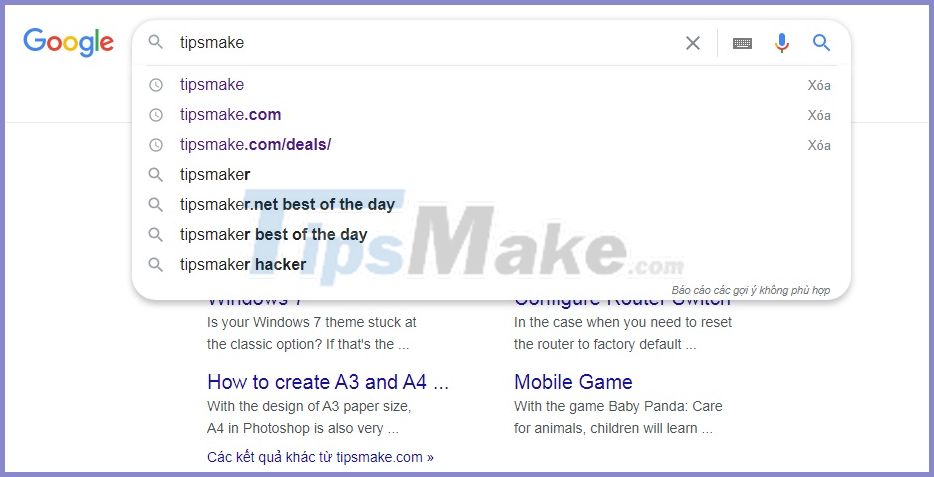
You can repeat this step and get more results by adding each letter of the alphabet:
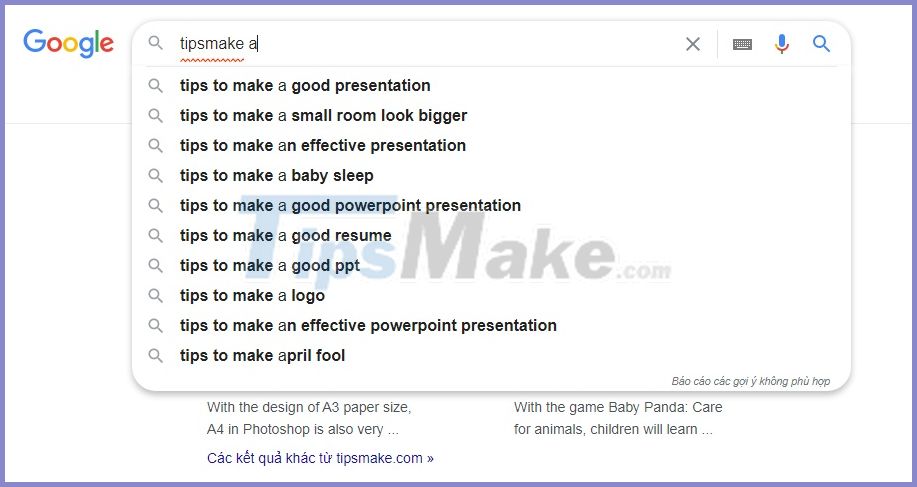
If this sounds like a big hassle, go to Keywords Explorer and look at the Search suggestions report. This report efficiently automates the process and shows Google auto-complete keywords along with valuable SEO metrics like Monthly Search Volume and Keyword Difficulty.
Find popular and interesting topics in the field
Content Marketing is the art of creating useful and valuable content to engage your target audience. But don't just start a blog and hope for the best. Find out what topics are popular and interesting in your niche and create content related to the topics covered.
Expand your keyword list by literal search
Google search results and professional keyword tools can give you a lot to get started with, but it's not enough.
To be successful with SEO, you need to understand how people talk about your niche, what problems they have, . Take advantage of every opportunity to talk to customers and pay attention to the language they speak. use.
Doing this directly is great, but also very time consuming.
So here are some places where you can find words that people use when talking about topics you care about:
Forums: There are quite a few communities where people talk about your niche.
Group Facebook / LinkedIn: LinkedIn is more geared towards the B2B market, but when it comes to Facebook, there are groups for almost anything.
Any website or social network with a large number of visitors and user-generated content can serve as inspiration and keyword ideas.
Podcasts can also be a good source of inspiration .
Don't be afraid to be creative. Inspiration and keyword ideas are all around you.
Understand the metrics behind the keywords you are targeting
Most people focus entirely on two metrics after doing keyword research:
Search Volume (average monthly number of searches) and Keyword Difficulty (an estimate of how easy or difficult to appear on the first page of search results for that term).
These are important because they provide useful information about a keyword's potential and its difficulty ranking.
However, instead of just looking at Search Volume, you should try to find out the real traffic potential for each keyword. That way, you focus your efforts on ranking for the pages that are most likely to bring in the most targeted traffic your way.
Learn more about keyword research
Keyword research is an essential aspect of SEO. However, understanding the basic concepts and metrics is a must for every website owner who wants a lot of organic traffic.
CHAPTER 2: BASICS OF SEO
Before stepping in to learn the techniques as well as effective web SEO methods 2020. Let's start with the most basic knowledge about SEO.
Chapter 1 of this web SEO tutorial will help many people understand the whole concept of Search Engine Optimization and how search engines work. Let's see!
What is SEO?
The higher your website's SERPs rank, the more hits your website has.
Job SEO was born from the 90s when search engine (search engine) was first known. Today, for many people SEO website has become an essential marketing strategy and a strongly growing field.
If you want to learn SEO website , you should prepare both mentally and skillfully to be able to perform jobs that require creativity, technical skills and good analysis. Each skill will have different goals, however, what many people have in common is getting the highest ranking on the Google results page.
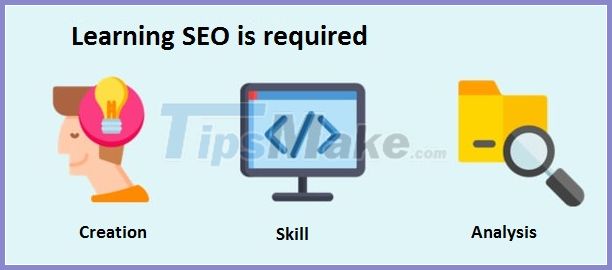
Learning SEO website needs creativity, technique and the ability to measure and analyze data
To put it simply, SEO website is to optimize the right website so that the business can access the right file of potential customers.
To do good website SEO, your website doesn't just need a perfect structure. A good technical foundation, on which web content must be quality and optimized to suit the needs of the reader.
And of course, this content has to be extremely impressive so that other websites will be willing to share your articles and link back.
Is SEO website difficult?
To understand this part. You definitely have to understand 15 Top Google SEO jobs to optimize the website for the best.
Search engines like Google, Bing, Yahoo! and other websites that rank on the SERP page based on different ranking algorithms.
Can we define these algorithms? Yes and no!
Let me explain it to you!
Google uses more than 200 ranking factors. Although you already know quite a few of them such as:
- Quality content
- Quantity and quality of backlinks
- Techniques to speed up page loading, .
However, many other ranking factors are still kept secret and no one can say with certainty that they can fully grasp these factors.
Of course, you don't need to know all the factors to race your website for ranking. To understand what SEO website is, imagine it like a bowl of soup.
3 Important factors in web site SEO
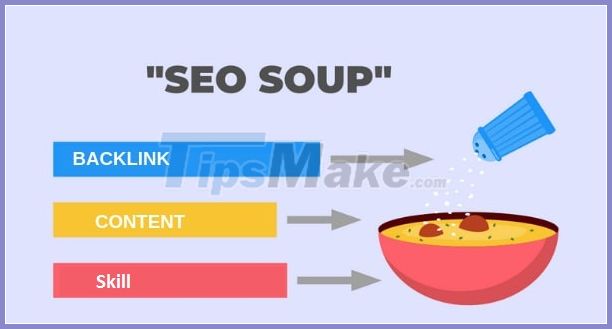
There are 3 factors that make up the SEO website: backlink, content and technical in the website
There are 3 important structural parts:
- The bowl: represents the techniques behind the website (SEO technical and SEO onpage). Without the right bowl, the soup will spill over the table, right?
- Soup: represents the content of your website - that's the most important part. Poor quality content that causes the website to rank low is very simple.
- Spice: represents quality backlinks, increases the authority and trustworthiness of the website. The ultimate ingredient to make your SEO soup perfect.
Internet users use search engines when they are looking for information, products or services. You will probably want your business to appear when users search for information related to your product or service.
Then it doesn't matter whether you are selling products, services, blogs or anything else. Web SEO is a must for users to find your business!
If done properly, web SEO will improve your web's ranking in the search engine results pages (SERPs - Search Engine Result Pages). Higher rankings mean higher traffic to your website. From there it delivers conversion value.
In short, if you want to have success with your website, you need to do SEO.
How to learn SEO website effectively?
Even small and fundamental changes can make a big difference in the way search engines "scan" your website.
In this beginner web SEO tutorial , I will cover all the important topics and the basics of how SEO is top Google so you can learn seo yourself and grow better as you go. do SEO.
If you wonder how to learn SEO website in 2020. We have one simple answer for you: You will need a lot of research and practice .
10 results are researched from millions of websites that are # 1 SEO Google
- The top website in Google SERPs has an average clickthrough rate (CTR) of 31.7%.
- A result in the top 1 position is 10 times more likely to get a click than a result in the 10th position.
- The CTR for positions 7-10 is almost the same . Therefore, even if you inch up one rank in that range, the traffic won't change much.
- Increasing a rank in search results , in theory, would increase CTR by 30.8% for the website.
However, this also depends on where you are increasing in rank. Specifically, moving from position 3 to position 2 will typically increase CTR significantly. From No. 10 to No. 9, there is no statistically significant difference. - The title tag containing a question has a 14.1% higher CTR than pages without a question in the title.
- Title tags 15 to 40 characters long have the highest CTR. According to our data, pages with 15 to 40 character title tag lengths have an 8.6% higher CTR than pages outside of that range.
- URLs with keywords have 45% higher clickthrough rates than URLs without keywords.
- Adding emphasis to your title tag can reduce clickthrough rates.
I have found that titles with emphasis words have a 13.9% lower click-through rate than titles that do not contain them. - Emotional headlines can completely improve CTR.
I found that titles that evoke a certain emotion, positive or negative, have a CTR improvement of about 7%. - Pages with meta description s received 5.8% more clicks than pages without tag.
Having grasped the above 10 research results, I think you've got a few ideas for significant rankings improvement. And it will also be easier to continue to learn about how SEO top Google I present shortly.
Basic SEO terms
- 4 main pillars in web SEO : SEO onpage, SEO offpage, Entity and Technical
- 3 schools of SEO: white hat SEO, black hat SEO and gray hat SEO
1. SEO onpage - SEO offpage - Entity - Technical
There are 4 main pillars in SEO that any SEOer needs to understand:
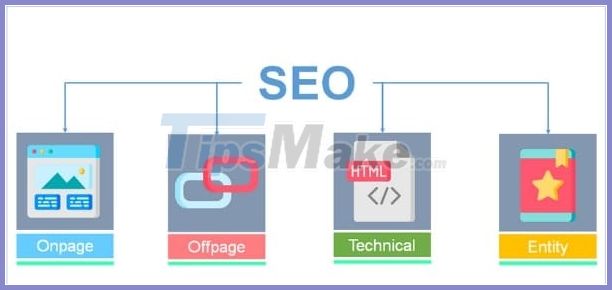
4 main areas in web SEO include: SEO Onpage, SEO Offpage, Entity and Technical
- On-page SEO: All the optimization work done on your website is to tell Google and users, "How good is my website"
- Offpage SEO: All the optimization work is done on "other sites" to tell Google and users "How well do other people say about my site?"
- Entity: Build and connect discrete information entities into a unified cluster, helping Google to identify a website representing a real business in the online market.
- Technical: How the content on your website is easily crawled and indexed by search engines.
On-page SEO (on-site)
On-page SEO includes optimization techniques implemented right on the website to increase rankings - from content optimization to technical aspects such as:
- Keyword research: What words do potential customers use to find information about your products or services?
- Meta description: A preliminary description of the content of the page and calls for users to click on the article on the website
- Optimize page titles (title): Set an attractive title, contain keywords and stimulate readers to click on the page to learn more.
- URL Structure : Make sure the path of the post is short, easy to remember, and match with the content on the URL itself.
- Content: Providing quality news and content that is relevant to the user's search intent
- Structured data (structured data): Provides information according to a specific structure will support the Google bot to better understand website content
- User experience (user experience - UX): Ensure good website navigation and provide a positive experience for the web access.
. and many more that I will cover in chapter 3 of this web SEO tutorial.
Off-site SEO
Off-page SEO includes all the activities you can do to improve web authority SEO through backlinks from other websites. There are many ways for you to build backlinks:
- Outreach email deployment
- Write guest blog posts
- Post on social networks
- Partner with influencers
- Trace valuable content, for people to love and link back to your website
. and many more ways that I will cover chapter 6 of this web seo tutorial.
Separate 2 parts Entity and Technical, I will guide more carefully in the next chapter.
2. White hat SEO - Black hat SEO - Gray hat SEO
The terms "black hat" and "white hat" are rooted in Western films, like "bad image" and "good image". But don't take these two concepts too seriously.
There is nothing completely bad, but there is nothing totally good. These two web SEO methods have their own advantages and disadvantages that are suitable for different fields and objectives of the business
Black hat SEO
SEO Black Hat is designed with the aim of manipulating search engines and often rarely focuses on user experience.
Black hat SEO techniques can get your website to the top of SERP in a short time. However, the search engines sooner or later discover that they will penalize and completely remove your site from the SERP immediately.
White Hat SEO
White hat SEO is a right and long term SEO strategy designed to improve the user experience with the following techniques:
- Quality and relevant content
- Overall optimization of the website
- Link building
There's also a term called Gray Hat SEO - a less risky way than the "black hat" technique.
Gray hat SEO technique is not clearly defined by Google, so you can attract thousands of users to your website. While not getting penalized or losing your top someday.
At the present time, the SEO community is always arguing about which SEO school to choose. This choice depends on key factors:
- Deployment time & found to be effective
- Business areas
- Short-term strategy - long-term
- .
CHAPTER 3: SEARCH TOOLS
In chapter 2 of this Google web SEO tutorial , you will learn:
- How search engines work
- How people use them to find information
- Commonly used query type
We are going to "bail out" the advanced technical foundation behind Google.
Let's take a closer look at the search engines and what are the most typical ranking factors you should focus on!
How does search engine work?
These tools perform 3 main activities:
- Crawling: scratching the data
- Indexing: indexing
- Picking the results: selective results
This process goes like this:
1. Crawl of data
Crawl means thousands of small robots will scan all parts, content, keywords, titles, links, images, . on the website.
Any data that can be found on the web page is crawled.
The "bots" will crawl around every corner, discovering all the links on a website that lead to other websites.
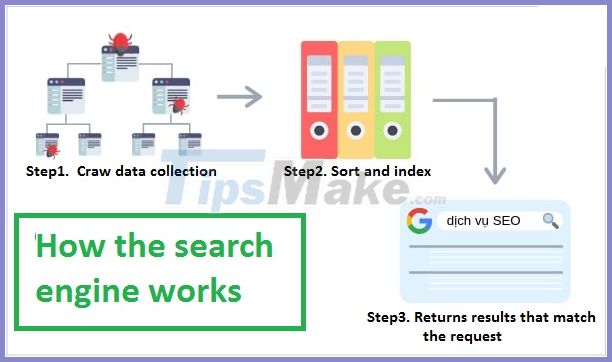
How search engines work - A guide to seo web
They then analyze those pages for new links multiple times. The bot will crawl the entire internet regularly to update new data continuously.
2. Indexing
Once the site is finished crawling, the indexing takes place. Imagine the index is a huge category ; or a full library of websites from around the world. It usually takes 1 to 10 days for a website to be indexed.
Tip: You can check which of your on-page pages have been indexed using this operator formula: site: domain.com
Furthermore, every time a page changes, the bots scan again. Remember that only when web updates are indexed will they be visible to search engines.
3. Select the result
Search results are important to both developers and users.
When internet users start looking for information, the search engine looks in a previously indexed database and retrieves the matching results.
It has a query checkout of billions of websites based on different algorithms.
Search engine companies (Google, Microsoft, Yahoo!) keep the exact algorithms for ranking websites secret. However, many ranking factors have been "explored".
Ranking factors
Most of these ranking factors have been proven. But some of the rest are speculations or even "myths". On top of that, some factors are more important than others.
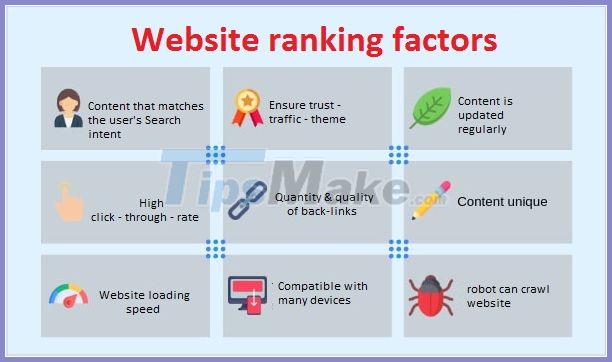
Guide 12 Important website ranking factors to keep in mind.
You don't have to know all the ranking factors to learn web SEO. But it's better to have general knowledge, right?
One of the most important factors, a backlink profile is made up of the number and quality of backlinks leading to your site. Google takes an approximate look at website authority. Each backlink is basically no different from a quote.
Some other important ranking factors include (in no particular order):
- Use LSI keywords and keywords
- HTTPS
- Related Backlink
- Grammar and spelling
- Authority / reputation of the website
- Social share
- The age of the domain name (domain) website
- AMP
- Page layout
Ranking factors can be broken down into on-page SEO factors (including technical SEO) and link building or off-page SEO.
How people use search engines
Bottom line: The main point of SEO is that it is user and search engine friendly. If you invest all of your money and time into advanced SEO techniques, that's fine.
But if the user interaction is poor, your location may suffer. User experience is always a top priority.
Interactions with search engines have evolved over the years. However, the steps are the same:
- User in need of a solution, information or answer
- They enter demand in the form of a query (keyword) into a search engine
- See the results returned first
- Click one or more results
- Browse the web pages briefly to find the answer
- Go through more results on search results page 1 and / or change search query, if the answer is found.
Search engine market share
In the charts below you can see which search engines people use the most. The data was obtained from Netmarketshare's statistical reports.
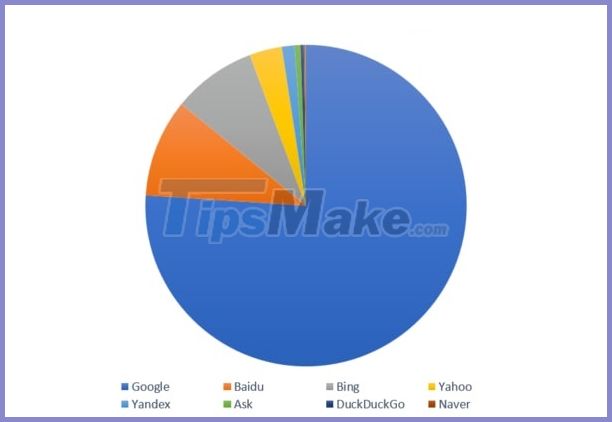
Reported the market share of search engines on Desktop with Google accounting for 76.02%
How do we classify search queries?
There are three types of search intent:
- Directional
- Find information
- Deal
- Trade investigation / review

Guide to web seo: 4 Search purpose of Internet users
To be able to understand the content in detail, the next section is to classify keywords based on search intent, you need to understand 4 search purposes .
SERP updates
Most of the websites around the world are being updated daily, weekly or monthly. This proves that the internet grows every day.
As new websites come and search engines innovate to index, organic search results can change.
Another very important factor is that the Google algorithm is also constantly changing. Small tweaks may not cause anything significant, but a large algorithm update can be as impacted as an earthquake.
What I am trying to say is this: even if you are a winner - top # 1 Google, your position may one day be replaced by competitors.
In the chart below, you can see the importance of top ranking in Google depending on their organic CTR distribution for May 2019 (based on Advenced Web Ranking data).
SERP Feature
SERP Feature includes all results shown on the SERP search results page, not Organic Search results.
There are about 16 different SERP features that you will see on the Google search results page:
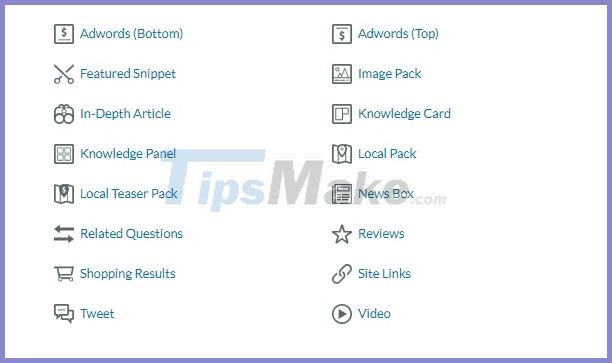
16 The SERP Feature Type usually appears on Google search results page
Why should you care about these features? Because it influences the user's behavior when they see the SERP. Since the user has found the answer right on Google itself, in many cases the CTR of the top web pages will be lower than usual.
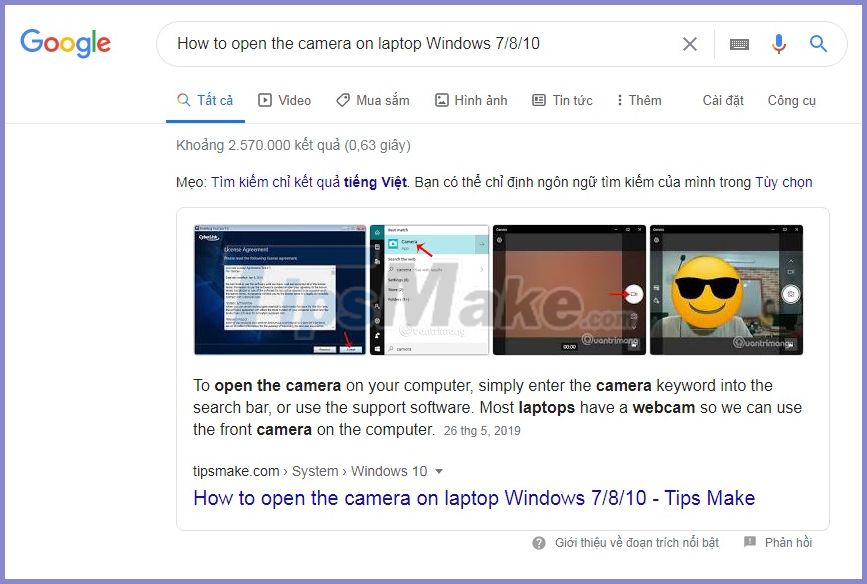
The SERP Feature web tutorial is in Feature Snippet format
The first result that comes before the top 1 is Google's top 0 - featured snippet, with all of the most condensed information. So you won't need to look at other results anymore.
Besides, there are:

SERP Feature is in Image pack
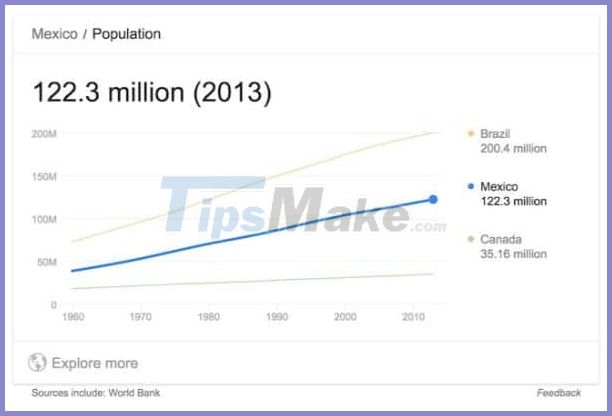
Knowledge Card

Shopping Results
CHAPTER 4: SEO ON-PAGE
To do on-page SEO you need a pretty long checklist of work to be done.
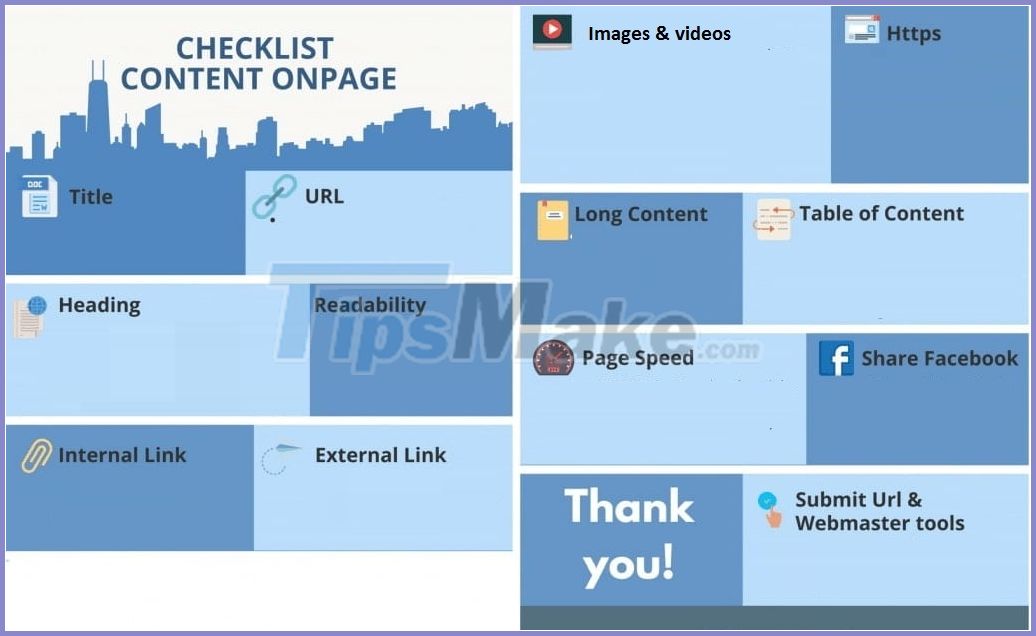
Onpage 2020 optimization checklist
A few years ago, on-page SEO mostly performed over-optimized meta tags, content, and titles. However, if you want to learn web SEO in 2020, you will find a lot more interesting with on-page tools.
Let me dig into this issue with me.
Search engine algorithms have become more sophisticated than in the past when just stuffing a mountain of keywords into content, title, and description was enough to achieve high rankings.
If you want to learn web SEO, you must learn to innovate with modern SEO. One of the biggest improvements search engines make is that they consider the human factor, in other words, user engagement.
Meta description
Meta description is a short piece of information displayed on the Google results page, which helps to summarize the website content for users and the bot to roughly understand the content they are about to visit.
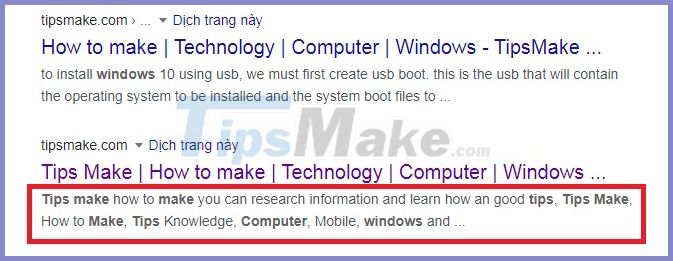
How meta description meta tags show up on Google
The titles and meta description tags are contained within keywords that do not directly affect your rankings. BUT they still drastically affect CTR and user engagement in general.
Hence, they are still very important for web SEO.
There are many tools and plugins (e.g. Yoast SEO for WordPress) that analyze your content by using the focus keyword in the meta Title, meta description, heading tag, overall keyword density, image alt attribute. photos and many more.
The Yoast SEO tool offers a lot of suggestions for optimization. But it is difficult to follow these checklists when it comes to the human factor.
Make sure you take both search engine optimization and user experience into consideration when creating meta tags.
1. Find out what users are looking for
- Are you planning to write articles on a topic that people are searching for?
- Are you sure your point of view is different, unique?
- Can you write better new content updates for the topic?
- Is the time to publish the article is appropriate?
These are the big questions before you start writing, whether it's a blog or a landing page.
There are many ways to find the answers to the above questions.
Keyword Research is a required part. Effective keyword research will be covered more clearly in Chapter 5 of this website seo guide.
2. Title Tag and headlines
Write a good title (Title tag), meta description, and headlines.
Your primary SEO keyword is still required, so users know what your site is about. Use the meta description to emphasize the call to action (CTA).
Convince both users and search engines that your site is the one that is worth clicking on.
Remember: Always pay attention to user interaction. So don't overstate the truth by using "bad" or too nonsense words.
Find out how your competitors do it, learn from them and plan to optimize content for these keywords for your website!
Quick tips for title and title tags:
- Google allows display of up to 70 characters of title and up to 155 characters of meta description (updated in May 2019).
- Make sure to use the correct structure h1, h2, h3 to make the post well structured and increase readability.
- Pre-check search results using tools like our SERP simulator (below image), SEOSiteCheckup or WordPress plugin.
3. Use SEO friendly URLs
- Avoid using auto-generated URLs with confusing sequence of characters:
www.tipsmake.com/2017/post318e7a349f6 - Select the URL representing the content of the page:
www.tipsmake.com/web-seo-top-google
If you use WordPress, you can install permalinks in general settings.
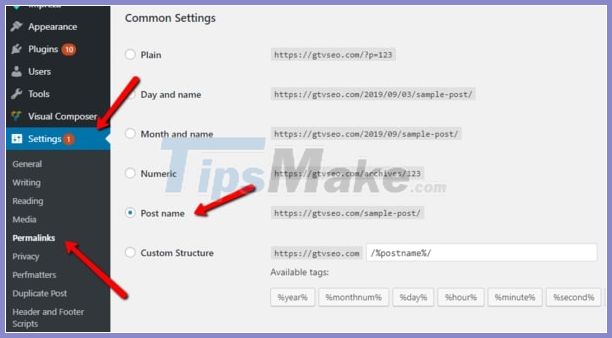
Choose Setting> Permalinks> Post name to edit the URL of the page (for WordPress).
Web SEO experts and bloggers say that it's easier for short URLs to top. I think it depends on the issue of the user experience. However, this doesn't mean that a 20-word URL will be fine!
4. Diverse types of content used:
Do you want to attract users to visit the website? Use images, infographics, charts and videos. They help reduce bounce rate and increase engagement.
Optimal checklist:
- Optimize seo standard images by naming unsigned images, relative to the image's content, optimize alt tags for images
- Embeded videos and charts into articles
5. External link and internal link
Use external links that give Google signals that your topic is relevant.
Make sure your link leads to the relevant page and has authority page.
Internal links are the perfect way to promote other articles or sections of your website. Implementing internal links makes it easier for users to access the page on the information they are looking for, resulting in higher page engagement.
Internal links also help to help Google bots understand the web structure.
Quick tip
- Outbound links may not improve your rankings directly, but use them.
- Use up to 2-3 internal links, depending on post length.
- Google bot will scan these links. So don't try to cheat and be careful if the links are broken.
- Follow the topic cluster model for internal links
6. Let everyone interact
You think: Great content will go viral and be known by everyone?
It is far from the "natural musk incense" era. Everyone is lazy these days, so the social share buttons should always be on your website.

Displaying social share buttons will help your website increase engagement and share more
According to BuzzSumo, the social sharing rate has decreased by 50% since 2015.
Besides social media channels like Facebook, Twitter or LinkedIn, consider implementing more topic-specific and specific social networks. Such as Reddit, Pinterest and many others.
CHAPTER 5: SEO TECHNICAL
SEO Technical often requires that the person implementing this technique have at least some coding or web developer skills. But do not be too afraid, if your website is built on wordpress platform, it will be very easy to optimize this part.
These are the most important Technical factors you should focus on:
1. Install Google Search Console:
Setting up Google Search Console is one of the must-have tools for web SEO to top Google, helping you track and maintain your website's presence and performance in Google Search.
This website admin tool will help you:
- Keyword ranking analysis
- CTR
- Google Penalties
- And many other useful data for technical SEO.
Other features include reviewing, evaluating mobile content for content, submitting the URL you want Google to index, page errors, data structure errors, and links.
Quick tip:
- Every property (website) needs to be verified to use Search console features.
- Connect Search Console with Google Analytics.
- How to verify your property (website) in Search Console
2. Site speed
Page speed is one of the ranking factors that you should improve regularly.
If the website doesn't load and shows up within 3 seconds, the user will leave.
Tip here:
- Speed test in PageSpeed Insights.
- Optimize seo standard images, allow GZIP compression, compress HTML, shrink JS and CSS and try to reduce server response time.
- Quality web hosting plays a big role in website speed. So make sure to choose a reliable supplier.
3. Optimized for mobile phones
Optimizing your mobile display website is a must.
The whole world is moving from desktop to mobile. In fact, implementing a website that isn't optimized for mobile devices will have a huge negative impact on your rankings.
Google actually released the Mobile First Index update in March 2018. Accordingly, Google will use the mobile version of the website for indexing and ranking.
Quick tip:
- Test your website's responsiveness in the Mobile-Friendly Test.
- Track your keyword rankings in mobile search results.
- Make sure the mobile version of your website works smoothly.
You can also consider AMP. It has HTML code extended with custom properties allowing for faster rendering of static content.
4. Sitemap
A sitemap is a file that lists all parts of your website, making it easy for search engines to crawl your content. It can be said that a sitemap is very convenient when you run a large website with a complex structure.
Having a sitemap doesn't mean your rankings will improve. According to Google, a sitemap is beneficial, but if it doesn't, the website will not be penalized.
Quick tip:
- Not all websites need a sitemap.
- There are more types of sitemaps than just XML sitemaps.
- The sitemap should not contain more than 50,000 URLs and cannot exceed 50 MB.
- Place the sitemap in the root directory of the website:
5. Robots.txt
Robots.txt is a file that tells google bots what parts of your website you don't want them to visit. It is structured as https://cainaylavidu.com/robots.txt and this message file is completely public.
It helps when you don't want some unnecessary scripts, files or images to be indexed.
Robots.txt syntax:
- User-Agent: * (example: Googlebot)
- Disallow: / (example: /images/pizza.png)
Quick tip:
- Do not use robot.txt to hide content from search engines.
- Crawler or malware robot will not be able to violate robot.txt
6. HTTPS and HTTP
In 2014, Google announced it would increase the rankings of HTTPS / SSL sites. Nowadays, we all know that this is one of the criteria that only slightly affects ranking ability.
However, security is a strong psychological impact factor.
Google Chrome, for example, is labeled as an insecure website because it is not encrypted with SSL, and it affects user interaction.
7. URL / IP standardization
In general, IP normalization is very important when a website is indexed under both its IP address and domain name.
URL normalization means: https://vidu.com and https://www.vidu.com/ would be the same URL.
8. Add structured data to the website
Structured data (or structured data) is a piece of code that is inserted into a website to help search engines understand website content better. This data also helps the tool to index the page effectively and return many relevant results.

Structured data helps to index pages more effectively
In addition, structured data increases the value of search results when adding "rich snippets" such as review, price, rating . so that your results return full information and occupy more area on the search page. .
Thanks to such outstanding visual effects, rich snippets are a way of attracting users to click. Thereby increasing the CTR rate and bringing in more visits. With the above benefits, there is no reason that you should refuse to add structured data to your website, right?
9. Fix duplicate content error
Duplicate content is one of the most serious errors that affects search rankings and website traffic.
The reason is that Google is aiming for valuable content for its users. And if you create the same content, your website doesn't deserve a high position on the rankings.
You can correct duplicate content errors by:
- Prevent CMS from publishing articles of equal content (by disabling Session IDs and removing printer-friendly versions of articles)
- Use a canonical tag to tell Google content which major version to rank for.
Summary of 13 Technical SEO errors
During the implementation of SEO projects, GTV's technical team also encountered many difficulties. From there, we draw out 13 technical errors affecting SEO the most.
These errors are usually related to the technical checklist I mentioned above about page load speed, sitemap, canonical, 404 .
CHAPTER 6: CONTENT AND SEO
Content & SEO are two independent terms or an ideal couple?
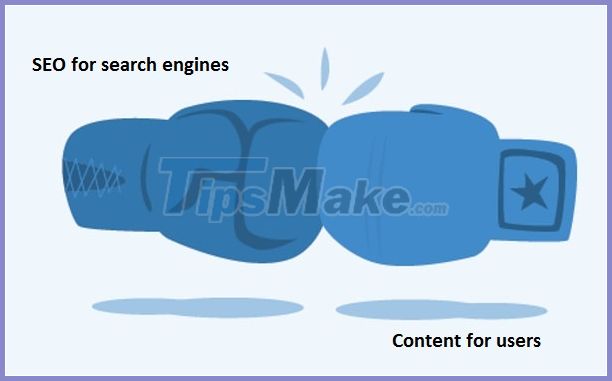
Content and SEO elements support each other very effectively in optimizing the website with search engines and users.
There is a common perception among some marketers that perfect content doesn't need web SEO.
That's a mistake!
And I will show you why.
Seriously, can you imagine a website that's perfectly optimized for content that no one will read?
Some still believe:
- Web SEO is for search engines.
- Content for users.
Wrong! In Online Marketing, Content & SEO always works together. You create unique and parallel content that optimizes it for search engines and viewers. This technique is sometimes referred to as "SEO content" or "SEO copywriting".
What content should I create?
This is the first and foremost question.
The answer (at least in theory) is simple: Unique content.
Writing great, novel, thought-provoking, and engaging content marketing is a great start. Content and SEO have to go hand in hand from the start. You can choose from different content types:
#first. Blog
A good blog is capable of attracting users to e-commerce websites, businesses or professional service providers.
Tips:
- Be original, not a copy. Writing unique content is always a prerequisite of blogging.
- Do your own research and use new data
- Length is not everything, but quality and value for readers
- Be consistent in content to create a strong personal brand
- Partner with companies and influencers
#2. Product page
Quality product pages should be the top priority of every online business.
The product page is often used as a landing page for PPC campaigns, including AdWords remarketing or paid social media.
Quick tip:
- When it comes to eCommerce, you need a clear description of the product, how much it cost and how to buy it (CTA).
- Use product professional photos and write attractive descriptions
- Site speed and UX are especially important
# 3. Case study
Case study is about introducing the world to how you do things, sharing interesting data you've gathered, revealing what a customer satisfaction strategy is, or how you failed to launch one. new product.
Perhaps the best thing about case studies is that they are always unique and bring new knowledge to readers.
Quick tip:
- Spend time doing research, preparing enough data, and providing truthful, reliable information
- If you're writing about your business, show people the spirit and humanity of your business
- Don't use a strained tone of voice, people are not interested in boring success stories
Check out this survey on the benefits of publishing Buzzsumo's first study:
# 4. Infographics
Everyone loves Inforgraphic! They are easy to share and also easy to download.

Creating infographics is making information beautiful and easy to read.
Quick tip:
- Infographics still have great sharing and linking capabilities, so make sure you have flexible use of both data and design.
- Use only the most important data
- Create a story, add a chart or picture
- When uploading infographics as an image, don't forget to write the translation "transcript" as crawler cannot read the text in the image
# 5. Tutorials articles, how-tos, tips & tips
Tutorial articles are often evaluated as part of blogging.
"Instructions to make…." And "How . how" are the headlines. You can write instructions or how to do it, but remember that there are thousands of similar articles.
Even so, don't copy others, provide other tips & tricks from your competitors.
Quick tip:
- Design your own videos or at least use your screen capture videos and screenshots.
- Reach out to the product owner or seller to get a backlink or share on their social media files
- If you're writing your own product guide, put the instructions on your product's landing page for more traffic and an internal backlink.
# 6. Video
High engagement, social shares, likes, backlinks, lots of leads and conversions.
These are the biggest benefits of using video content. Videos can increase conversion rates by 80%.
Quick tip:
- Write the script first, then edit and rotate to the script
- Prepare some budget for editing hardware as well as software or to hire a professional video maker
- Post with translation, subtitles
- Develop a marketing plan or at least plan basic promotional activities to ensure the time and money you have invested
Of course, you don't need to always create your own videos. You can share or embed videos made by an industry professional!
It can enrich your content and make readers stay longer on your website.
# 7. Ebook
Ebooks are often used to generate leads.
Typically, B2B (business to business) pages will require an email address to download the ebook, but there are also B2C (business to customer) pages that do the same thing.
The reader does not naturally leave information to you. You must provide your readers with good quality eBooks.
Ebooks are usually in PDF format and contain a long piece of content.
Quick tip:
- Write it like a real book: great subject, catchy title, preview included, trustworthy author, precise word-for-word correction, and eye-catching design.
- Drive users to download: use an ebook with unique content and special tricks that aren't on your website or found in your competitors.
The ideal post length is…?
A few years ago, when web SEO, you just need to stuff keywords into the article to get to the top easily.
Somehow, this way of web SEO has peaked, when there are almost hundreds of almost identical articles with the same keyword.
Creating content for its own sake is no longer effective.
If you write an article, you need to pay attention to your readers.
Posts should start with the title, opening paragraph, type of content, and most importantly, the overall content structure. Use correct,
When it comes to timing, posts with an average reading time of 7 minutes are ideal.
When it comes to web SEO tutorials, there's a lot of research. Most of them prove that longer posts rank slightly better.
What about duplicate content in articles or other parts of the web?
Sooner or later we will all come to write a few words that we mentioned in the website over and over again.
If there is too much duplicate content on your site, you can use a 301 redirect or the rel = canonical link section .
You can learn more on the Google Search Console help page.
The algorithm Google has developed will distinguish whether you are doing an intentional iteration or if you are a natural part of the new content, so stay calm.
If you are thinking of copying other people's content then you can stop reading this web SEO guide. I am absolutely not in favor of stealing content from others. The risks, not to mention the costs, will be enormous. Google will definitely penalize and remove your website from the search results.
Copyscape is a popular tool dedicated to plagiarism detection. All you need to do is enter the URL of the post and search.
Don't try to copy them, try to create your own unique content and optimize it perfectly.
Soon, you can start promoting.
CHAPTER 7: KEY RESEARCH
When it comes to web seo, it's impossible not to mention keyword research. This is one of the most basic SEO tasks.
In this chapter, you will learn how to find your niche and how to find profitable keywords that you can rank for.
Creating content without keyword research is unlikely to succeed.
Content that is not properly optimized will also not win rankings and website traffic will be low.
You need to know which keywords to filter can help you increase your traffic to target and implement them
Where to find keywords?
There are many different ways to find keywords, I have detailed instructions in this video, let's find out now!
Keyword Metrics
Previously, content creator only researched keywords to find high search volume keywords and then stuffed them into content to fool the search engine algorithms, to ensure high rankings in organic search.
This is no longer useful as keyword research has become a lot more complex!
These days you have to work with more metrics, consider the Google RankBrain algorithm and the actual SERP you intend to rank for.
Google RankBrain
RankBrain is a component of the Google algorithm based on artificial intelligence that helps Google understand the intent behind the search query and provide the most relevant results thanks to the machine-learning system.
Related keywords with high search volume and low keyword difficulty - an ideal combination of the three most important elements of keyword research.
We call it the Tripod Rule in Keyword Research - because these three elements represent three legs. As soon as you take one of your legs, the tripod will collapse.
Unfortunately, it's not always easy, and you need to find a balance between these factors.
#first. Long-tail keywords compared to search volume (volume)
Start by searching for long tail or middle tail keywords.
Long tail keywords have lower search volume, but have huge potential to convert
Visitors who find you through long tail keywords will engage more with your content and will convert them from them.
Because the query is specific enough to find a truly relevant result. And you will want to be on top in relevant results.
The biggest downside of long tail keyword is that the average monthly search volume is quite small. Sometimes, the volume of these keywords is lower than 100 monthly searches.
That's why you need to find the right balance and a metric called Keyword difficulty will help you achieve this.
#2. Keyword difficulty - Keyword difficulty
When you find the keywords you want to rank for, you'll need to evaluate how difficult it is.
Keyword difficulty is a very useful metric that will help you with it.
Keyword Difficulty is usually represented on a scale from 0 to 100. The higher the score, the harder it is for the keyword to rank for 1st SERP.
There are many research keyword tools on the market for calculating keyword difficulty.
Values can vary - same keyword, but one tool scores 30 while another gives 50.
That's because calculations are based on slightly different metrics and algorithms. It is important to compare the results in the same tool.
# 3. Search Intent - Search Intent
SERP analysis is a very important part of Keyword Research. It will assist you in finding out:
- How can you compete with the websites in SERP 1
- Search intent behind the keywords you want to optimize
By looking at the SERPs, you can identify the intent behind the user's search query. If you are looking for "homemade pizza recipes", you probably don't want to order a pizza.
Keep this in mind so you don't optimize for the wrong keywords.

User search intent
There are 4 different types of search intents:
- Navigate - search for a particular website / brand ("google", "youtube", .)
- Information - general information search ("how to make a coffee")
- Transactions - user wants to buy something online ("buy reputable iphoneX")
- Commercial - users do research before they buy ("Iphone X or Iphone XS")
If you have a pizza recipe blog, don't you need to rank # 1 for the keyword "pizza" (with more than 4 million monthly searches globally)?
Take a look at the SERP of the keyword:
If you have no intention of competing with Piza Hut or Domino then try to live and die ranking # 1 for "pizza" for nothing.
These types of keywords are very attractive but in many cases they are not relevant to your niche.
What is more, they represent only a few of all worldwide searches. Most searches are long-tail queries.
How do I GO keyword research?
Impatient newbie and content creator often find a high search volume keyword on Google Keyword Planner or any other keyword research tool without even paying attention to other metrics.
As we explained above, finding an ideal keyword does not mean that you will choose a high search volume keyword.
Another mistake is misinterpreting the data. The "competiton" score in Google Keyword Planner (GKP) and keyword difficulty metrics are often confused and misinterpreted.
"Competiton" in GKP represents how competitive it is in Google AdWords - not how difficult it is to rank for that keyword.
Avoid keyword stuffing
Another thing you should avoid at all costs is keyword stuffing.
Keyword research is no longer about finding an ideal keyword and using it as much as possible.
Instead, choose a focus keyword and use it in:
- Heading tags
- Title tag and meta description
- The opening paragraph
- Body (just repeating a few times is enough)
Google has evolved and Google really understands what content is about.
If the content is well-written, comprehensive, and user-friendly, you can actually rank for keywords you don't even use in your text.
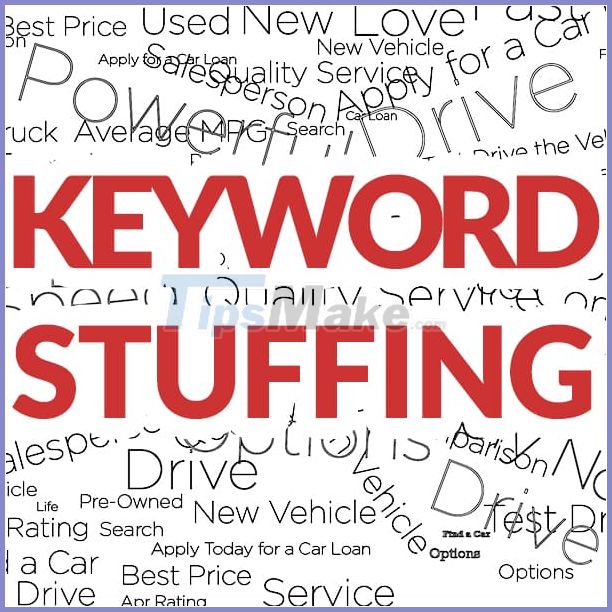
Avoid keyword stuffing.
Instead of using the same keyword more than once, try to find LSI keywords.
Latent Semantic Indexing (LSI) keywords are keywords that are semantically related to the main head keyword.
LSI keywords often change based on current search trends and would be great if you add these keywords to the article content. You can use LSIGraph to generate a bunch of helpful keyword ideas.
A detailed guide on how to effectively SEO keywords on top of Google
What is keyword SEO?
Keyword SEO is a multi-step tactic with the ultimate goal of bringing keywords to the "top" of the search engines. This is an important factor for any search engine.
There are a lot of things to cover with each of the results mentioned above, so I'll go into detail and explain each one in detail. Before going into this, I will also briefly talk about how I collect and measure and analyze data:
There are about 100,000 keywords that are randomly chosen to be included in the research, each keyword has a monthly search volume of at least 100.
From these keywords, the top 10 websites on page 1 Google are retrieved and analyzed, so there are about 1,000,000 URLs analyzed. In each URL, I analyze each HTML of the domain, backlinks and SERP snippets of each website.
More backlinks - Higher Ranking
If you take a look at my shared videos and articles about SEO, you can realize one thing I am a huge fan of backlinks , from how to get social media backlinks to top google map , automate backlinks , backlinks. from Google to PBN (and many more that I'll be sharing with you in the near future).
As the data (the article) shows, one of the key factors affecting Google ranking is SEO backlinks strategy and this I completely agree based on my experience when doing keyword SEO.
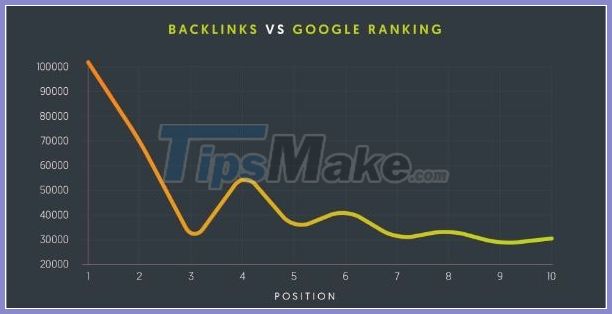
Site statistics table by Rank and Backlinks
Remember, "On average, the first 2 positions of Google will account for 38% of the total backlinks on the first page of Google".
The above chart shows you that a website with more links is pointing to the top of Google. (Well, of course I am saying here that you have to go at least good backlinks, not go many bad links and then don't see the top again saying my post is just for the view sentence, so bad. I'm so).
Another thing I hear from the Google SEO world is "just write good SEO articles and you will naturally top up", but as you have seen, good article is not enough!
The short conclusion is: If you don't have backlinks, it's hard to rank top.
What you will do ?
About the site, summing up the content you want to rank again is not top, then you can look through my series of video link building to help you get better results!
If those are news articles and you find it going to take a long time to create backlinks for your website, no problem! You can take a look at the video automation backlinks that helps you rank top google in just a few days on those articles.
Getting backlinks from different domains is very important in Google SEO
We all know that backlinks to content are important but we do not know the difference result of getting backlinks from the same domain and getting backlinks from different domains?
Below is a chart demonstrating the importance of diversifying your backlinks sources.
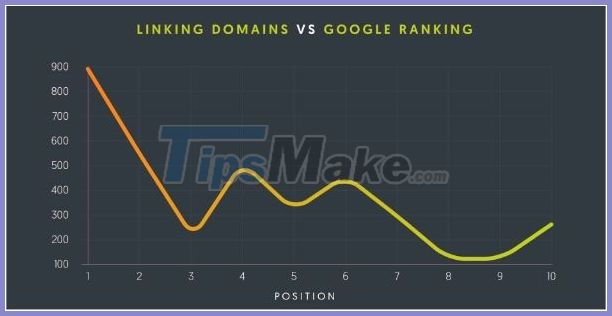
Site statistics by rank and Linking domains
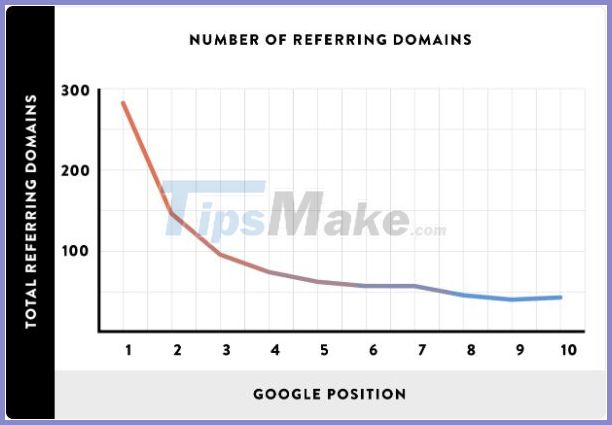
The web statistics table is based on rank and reffering domains
And in fact, the website with the 1st position often has links from different domains 168% higher than the top 5 position.
Table of website statistics based on Title length and rank
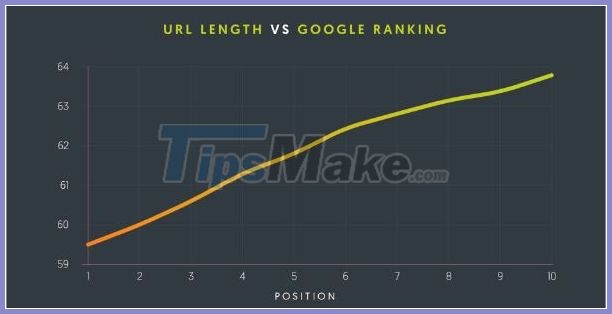
And in fact, the website with the 1st position often has links from different domains 168% higher than the top 5 position.
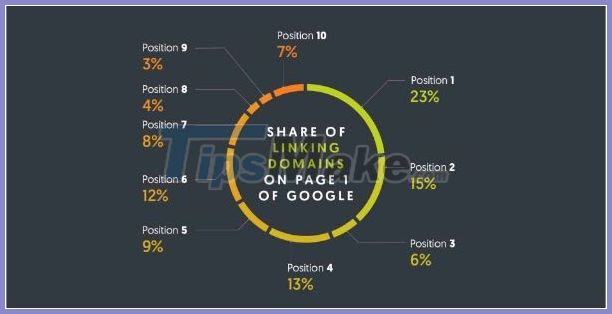
The chart of the Linking domains on the front page of Google
This is even more noticeable when you look at the top 1 website of SERPs: about 23% of the domain links out of the total link domains of the 10 websites on page 1.
Multiple backlinks to website is a good thing when SEO is at the top of Google . But many backlinks coming from many different domains really help you to greatly improve search results.
In order for you to see the perfect ratio of this (especially for those who regularly go to forums and blog comments), to help you apply it right after reading the article, I will carefully analyze the rate of backlinks with domains of the data I collect.
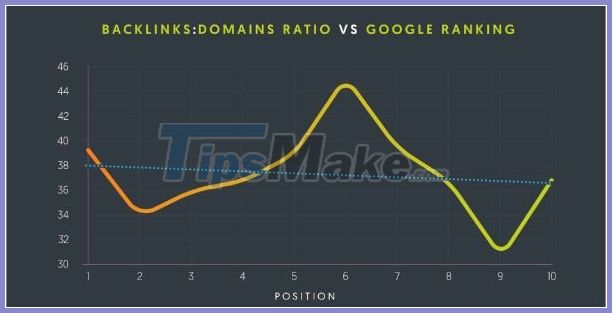
The website statistics table is based on the percentage of Backlinks per domains and rankings
As you can see on the chart, if an average of one domain can give you 37 backlinks, that's a great number! I hope this will greatly affect those of you who visit forum links, link profiles and give you a better result as well as faster.
What should you do?
Use tools like Ahrefs to analyze your top competitors for keywords, then list out the links you can get from there and then use a 37: 1 (37 links: 1 domain) ratio if possible. for better results, as well as check out my linkbuilding video list to increase diversity.
Content that is long and focused on one main topic often ranks higher than short articles
Longer content posts are more effective than 200 word posts?
Here are the results of my research.
I have found that pages with longer content often rank higher than pages with short articles.
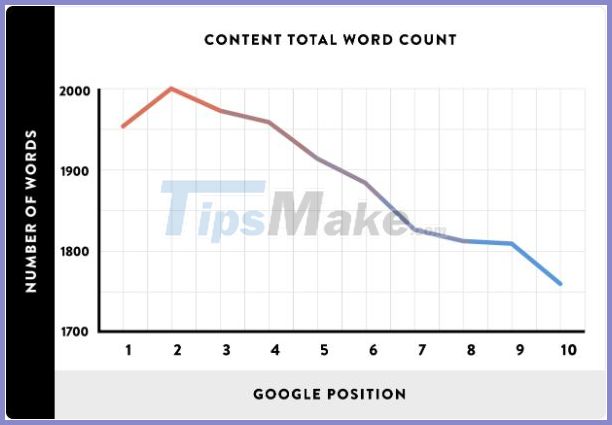
Website statistics table based on the amount of text in the article and rankings
And in fact, after summing up the data, I noticed that the average word count of the top results was about 1,890 words.
Perhaps it's because of the fact that longer content is more likely to get shared. A study shows that content over 3000 words tend to be shared the most, you can check out the English article here.
Another theory is that long content articles are likely to make Google understand your website more thoroughly. Additionally, long posts also prove that the author is very interested in posting quality articles to users.
What do you have to do?
If possible, articles about keyword seo provide information such as: "how to treat acne" or even sales articles, write longer, more detail and take care of it. The average "perfect" number to help you rank better in the top Google is 1,890 words.
SEO Google: Short URLs and titles are extremely effective
The article title and URL are just two small parts that users will see when searching on Google, but greatly affect the CTR rate of the website.
Although CTR is not mentioned by Google in influencing search rankings, there are studies that have shown that CTR affects rankings and it became even more important when Google rankbrain was launched in 2016. .
To better understand the concept of CTR, read the article " What is CTR? How much is good CTR in Adwords & SEO? "
Below is a chart demonstrating the importance of titles and short URLs.
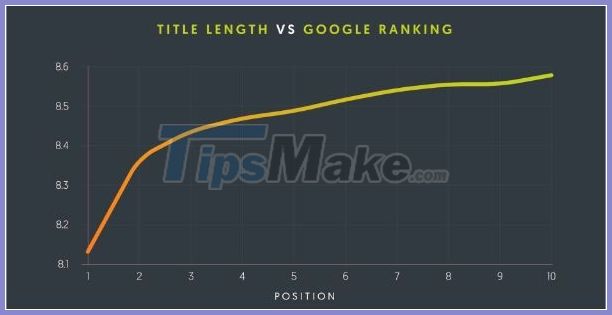
Table of website statistics based on Title length and rank
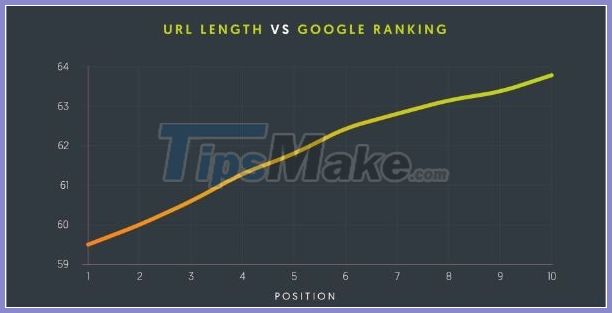
Website statistics table based on URL length and rank
The above diagram shows that short titles and URLs affect Google rankings. This makes sense when:
- Long titles may be cut short when they appear on Google. Meaning that part of the meaning of the sentence has been cut off, making the user feel less attractive to click.
- The short tiles will hit the right center and quickly make it easy for readers to understand and find the results they want.
- Long URLs look a lot like spam when they appear on the SERPs.
- If the URL is too long, it will lose part of the benefit when the bold keywords (keyword users search) are cut off, causing the user's attention to be reduced.
What do you have to do? Filter out urls that are too verbose and look like spam, and shorten their meaning if possible.
In addition to the standard title and URL, there are still 20 on-page SEO elements to help your website On-top Google!
Approximately 100% of Google SEO sites in position 1, 2 or 3 use https
For the most part, you already know that HTTPS was announced by Google as one of the signals that helps increase your rankings on the SERPs, but they have not announced how strongly it will affect. From my analysis, there is a connection between HTTPS and the higher rank on the Goole SERPs.
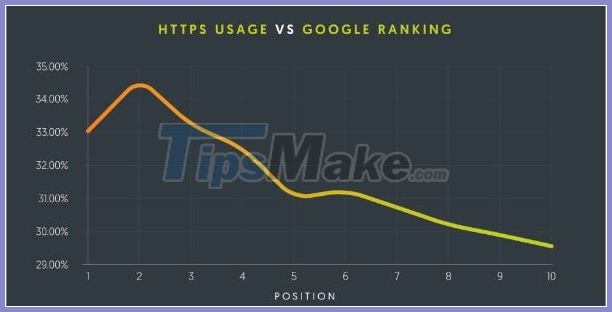
Table of web statistics based on Http usage and rankings
As you can see, HTTPS websites tend to rank higher than those that don't. Probably because Google is becoming more and more important at protecting browsers / user information, and soon they will show users "warnings" when users visit HTTP sites - like you have. As you can see below, and this is not good at all.
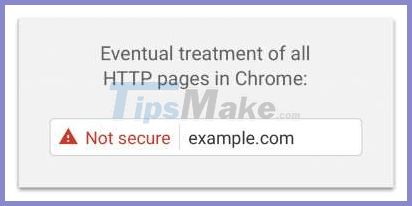
Warning from Google when not using Http
So keep in mind that at least 33% of the top 1,2 and 3-ranked websites of google are using HTTPS, I think this will become more and more important in the near future.
What should you do?
If your site is not already using HTTPS then you should start moving it over to https. If you don't know how you will do it you should probably learn how to do it or give it to someone else to take over the case.
There is no connection between having a high schema and ranking in Google
Rumor has it that when you have schema on your website, you are likely to rank higher in Google. Ah yes, even I used to believe how this top Google SEO would work, I even made a video showing people how to add a schema for a WordPress website , and of course, now I know I was wrong.
But "Gypsy" often say that:
Schema helps Google better understand your website, when it understands what website / article you are talking about, your website will be "encouraged" for everyone. people see more.
For example, you can use the schema to show people your website's rating as shown below.
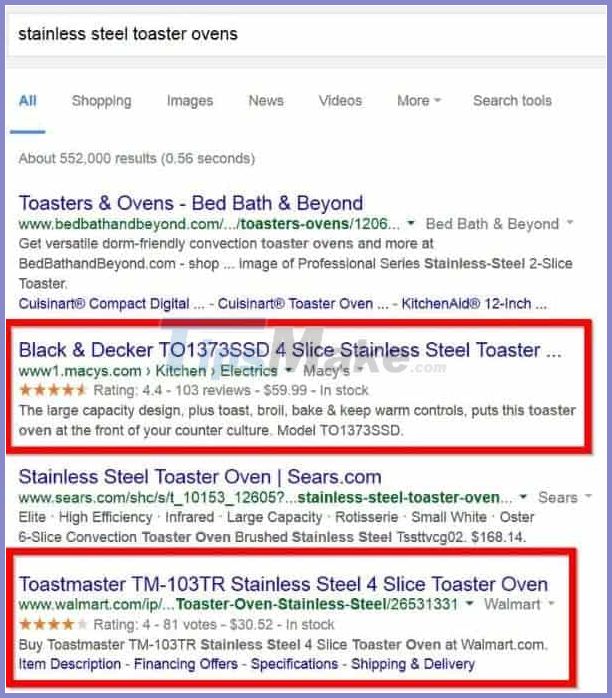
Examples of pages using schema display ratings
The above things will help you rank for better keywords. And even John Mueller - a manager at Google also pointed out that they may include schema in part of the ranking signal in the future.
This time, is "Gypsy" rumors correct?
Invite readers to follow the article: What is Schema? Schema secrets in SEO
However, despite these rumors, the data gathered from a million pages shows a complete opposite result that there is no relationship between the schema and the higher ranking in Google. So it can be said that this Google SEOtop way is really ineffective.
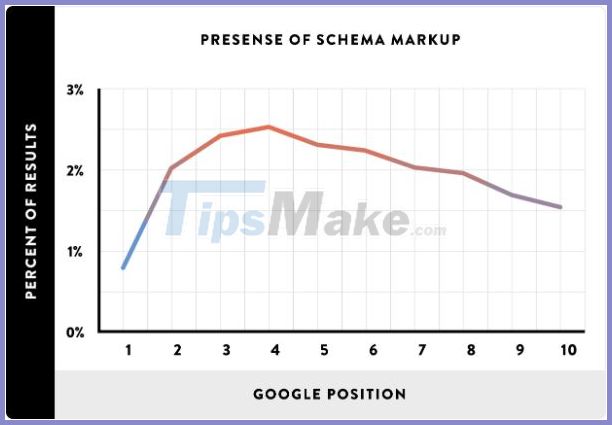
Site statistics table based on schema appearance and ranking
What you will do?
You can freely add schema to your website but don't expect it to get you higher ranking on google (at least for now).
The presence of the keyword in Title and URL is essential
As well as whether a short Title / URL has an effect on Google ranking, I also test how there are keywords in the Title and URL, and the results are not too surprising to everyone. : v
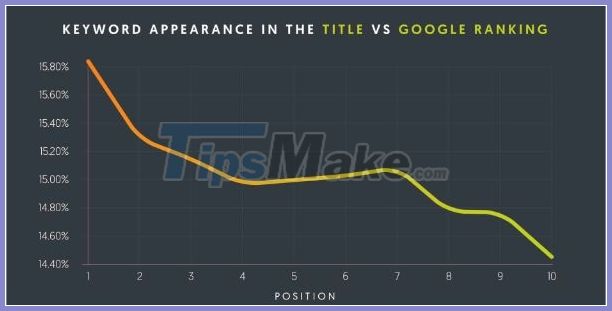
Site statistics table based on the occurrence of the keyword in the title and ranking
What should you do? Review your important content and make sure that its title contains the keywords you want to seo on on google. As for the new content that you are going to post, make sure that too. Well, avoid changing the url on your top sites, because it can be a big hit if you don't know what you're doing.
Outbound links help you improve search rankings
This is a part of the articles I synthesize on the internet, but this is a study that has been conducted to find out if outbound links positively affect the top rank of Google and the answer will make. You are surprised it is YES .
Then they set up 10 websites, on the same host, the website was bought on the same day and many different things to avoid the case of inaccurate results from research, those 10 websites were
- aveoningon.co.uk- No Outgoing Links
- bistuluded.co.uk- Outgoing Links
- chotoilame.co.uk- No Outgoing Links
- dyeatimide.co.uk- Outgoing Links
- edikatstic.co.uk- No Outgoing Links
- foppostler.co.uk- Outgoing Links
- gamorcesed.co.uk- No Outgoing Links
- heabasumel.co.uk- Outgoing Links
- iramebleta.co.uk- No Outgoing Links
- jundbaramn.co.uk- Outgoing Links
Next, they spend about a while and start tracking the results, below are the results they get back when they test and it will surprise you.
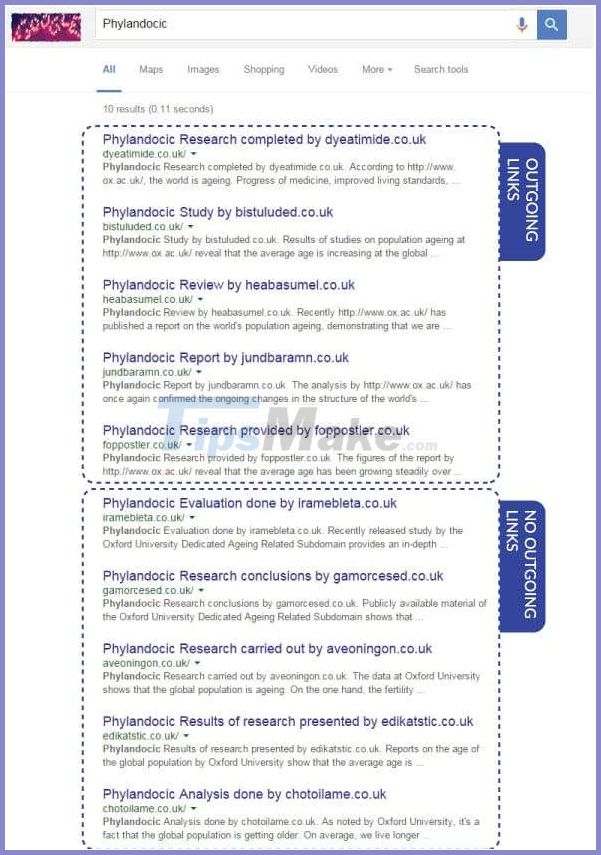
Test results of SEO keyword "phylandocic"
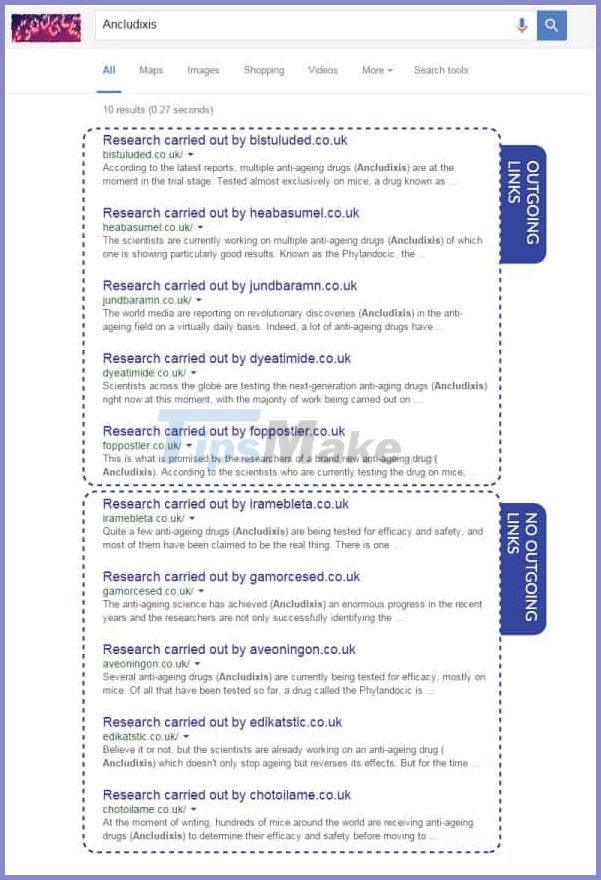
The results of the SEO keyword test "ancludixic"
Google once said that outbound link is not a ranking signal but it helps readers get more information and helps Google better understand what your website is about.
This means that outbound links are not a direct signal, but this top Google SEO way indirectly improves results on google.
You can read more about how they experimented and their results here.
What should you do?
Although the above experiment does not have any conclusions how strong outbound links will affect ranking, but one thing you know for sure that it has a POSITIVE effect.
So, go back to the content you want to seo as well as future articles, link to the same industry (of course not the competitor) and it would be better if it was dofollow links.
6 The secret of finding keywords to climb the top is easy
I know, SEO keywords to the top of Google is not easy.
Regardless of the SEO practice process. Only the stage of finding keywords that match the context, so that it is attractive and appealing to readers as well as potential customers, is a problem.
How to simplify the keyword search step is a question that makes many people have a headache.
In this section, I'll walk you through 6 cool and easy-to-follow tips for finding the most effective keywords! Join me to find out what those 6 secrets are!
1. Find keywords based on questions through 2 tools AnswerThePublic.com and Question DB
AnswerThePublic.com and Question DB are considered to be the two most perfect choices in choosing keywords for articles or blog posts on the website.
Not only are two free and useful tools, AnswerThePublic.com and Question DB also help seoer find the ideal keyword set, building up many articles of content that attract readers.
First, with AnswerThePublic.com, you will know what questions a customer might ask around the topic you are covering in your post.
Next to Question DB, the operating form is similar to AnswerThePublic.com; However, the questionnaire in Question DB is evaluated to be more unique.
One plus point for these two tools is that the question keywords you get are long tail keywords, something that not every competitor on the first page of Google has.
2. Use Amazon to find e-commerce keywords
The process of keyword analysis in ecommerce business is similar to keyword research for blog posts. The difference here is, with ecommerce SEO, you need to find keywords for product pages, category pages and more pages, etc.
Because of that, we need a useful tool to help find the most appropriate keyword phrases for each product. One of them is Amazon, with suggestions no different from Google.
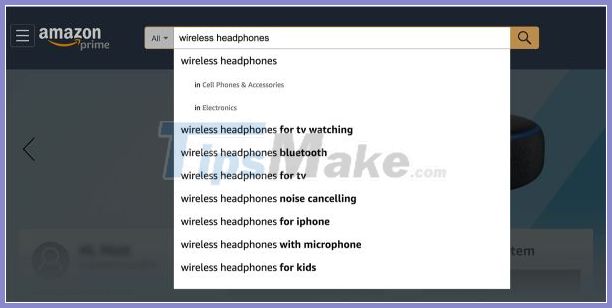
Amazon helps find the right keyword phrases for each product
As you can see in the picture, just enter the name of a product or product category in the Amazon search bar, and immediately will appear a long list of results for you to choose from.
3. Find keywords that your competitor has ranked for
In fact, entering a series of random keywords in the search bar can get you confused, and the effectiveness is only displayed for a short time.
Instead of relying on the usual keyword tools, I came up with another way of looking at the set of keywords my competitors used to rank for.
Not only does this generate an interesting list of keywords, but it is also important that the process is EXTREMELY FAST.
As you can see in the example below, I just enter the competitor domain name in the search field, in a split second, I get a list of thousands of keywords.
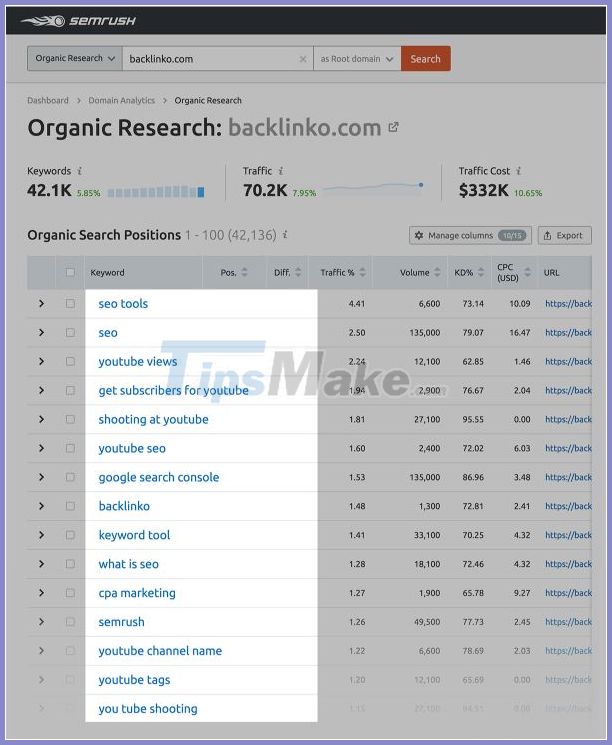
Create a keyword list by entering a competitor's domain name in the search field
Besides, there are a number of tools to help you find the technical principle of your competitor's best keywords, such as: Ahrefs, SEMrush, Moz Pro, etc . Song, most tools The tools mentioned above are all fee-based tools.
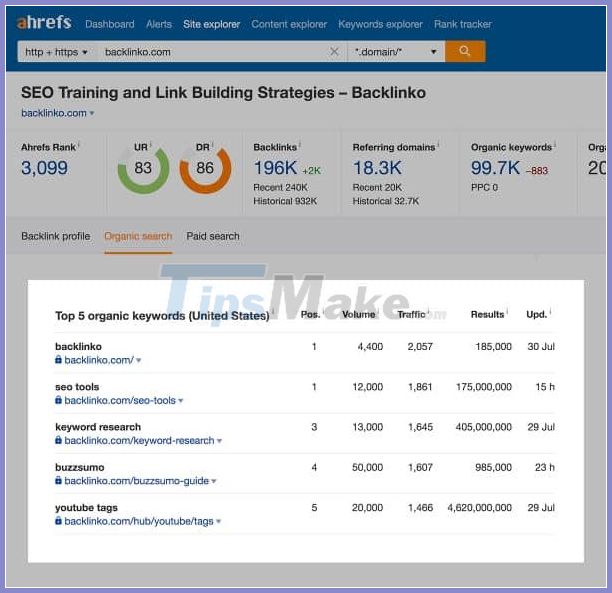
Ahrefs is one of the best competitor keyword research tools out there
However, one thing you need to keep in mind is that you only use how to find technical principles according to your ability! That is, if your website's domain name doesn't have a lot of authority then choose a website with a similar situation. Only then will you easily find keywords with high potential to rank.
4. Find search volume and CPC data using the Google keyword tool
Talking about finding search volume (Search Volume) or CPC performance, Google Keyword Planner is considered a super useful tool because the keyword data this tool provides comes from the most reliable data source: Google.
However, Keyword Planner still has 2 problems that need to be solved immediately:
- You need to set up a Google account before using this tool
- Only if your account has been or is running Google ads that you will get monthly search volume metrics.
Rest assured, these 2 problems will be resolved quickly!
First, you'll need a Google Ads account to use Keyword Planner, but that doesn't mean you need to run any Google ads. As long as your account is fully set up, feel free to use the tool.
Next, if the tool gives you a list of search volume, like the one below:
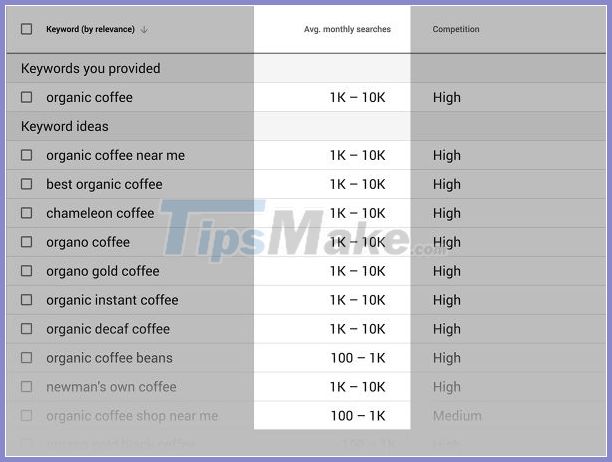
Google Keyword Planner gives you a super helpful search volume list
You can still add another keyword to the "Add to plan" field.

Add another keyword to the "Add to plan" field.
The Plan Overview section will immediately show you the exact number of impressions you will get (it's still basically a monthly search volume).
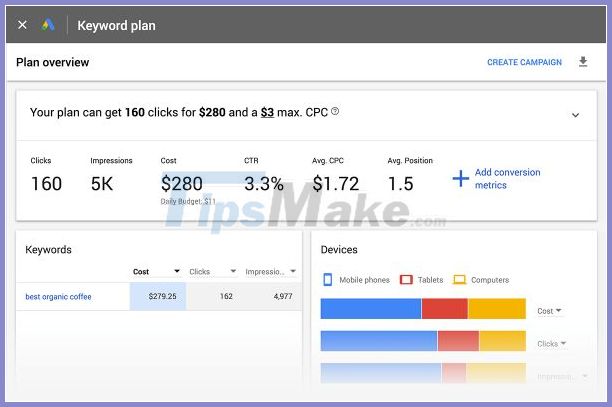
Plan Overview will show the exact number of impressions results
5. Discover popular keywords with Google Trends
Obviously, the volume of monthly searches is a very important metric because it clearly reflects the influence of keywords on users. Keywords to the top of Google that no one wants to search will also become useless.
However, the volume of searches does not tell you what that keyword is trending. In the long run, you will see, a keyword trend is more important than its search volume.
To find out keyword trends from time to time, you can use the Google Trends tool.
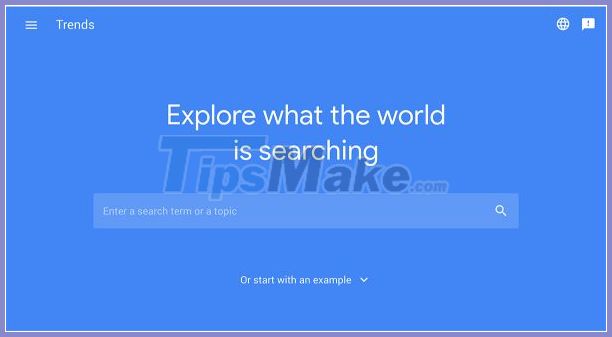
Google Trends helps to find keyword trends from time to time
However, the monthly search volume results this tool shows you only a brief outline of the popularity of a keyword, not telling you if the keyword is trending or should be limited. use.
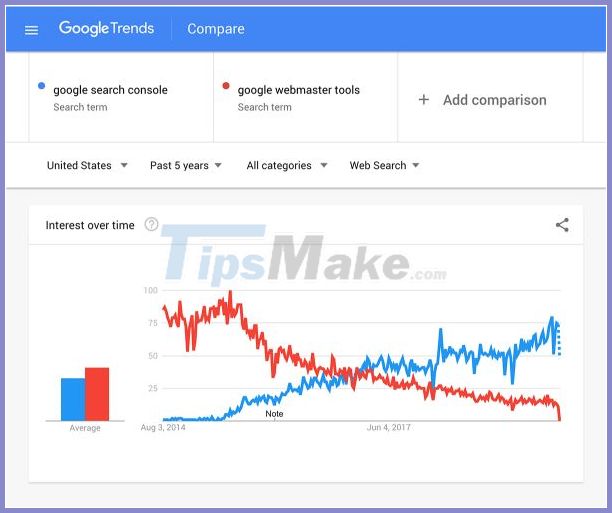
Google Trends still has some limitations
But anyway, based on that popularity, you also know what to do, how to select keywords to achieve the expected effect, right?
6. Find topics and keywords through BuzzSumo
Technically, BuzzSumo is not a keyword analysis tool. But, if you know how to use it, BuzzSumo is really a great tool for finding keywords.
How to use BuzzSumo can be described as follows:
- First, you enter the name of any website in the search field on BuzzSumo
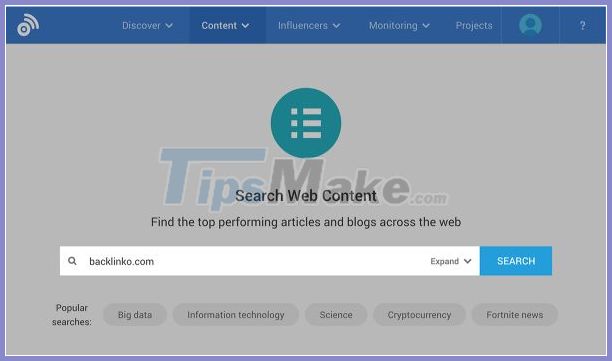
How to use BuzzSumo to effectively SEO Top 1 Google
- You will then get a list of the best articles on that website, as shown below:
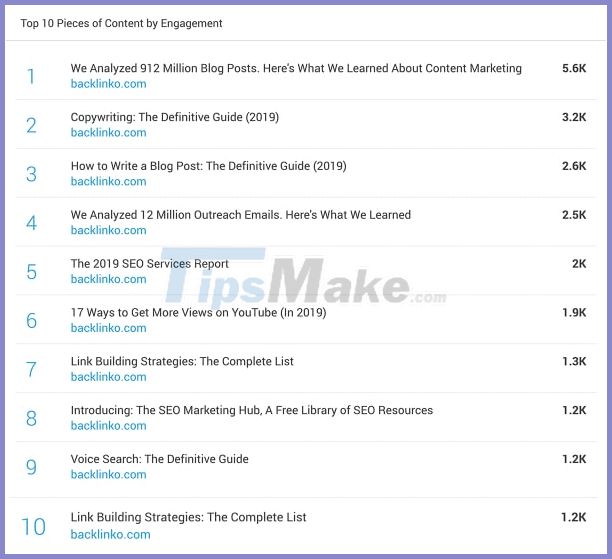
List of the best articles on the website
Although this list mainly displays article topic suggestions, but through it, you can also find out the SEO keywords as well as options; how SEO top Google is suitable for my articles.
CHAPTER 8: LINK BUILDING
In chapter 7 of this Google SEO Guide to the top of Google, I will give you detailed instructions on building link building. This is one of the most important aspects of search engine optimization.
Link building is the fact that your website gets links from other websites.
From a technical point of view, backlinks are hypertext links that act as a navigation between web pages.
Links are collected by search engines that allow them to index web content.
Why is link building so important?
Search engines use links to discover new websites and to rank a site overall on the SERP.
In other words, they explore new content and determine the authority of a website based on authority passed on from outside sources.
The website's backlink profile is one of the most important ranking factors.
When Google introduced PageRank in the 1990s, the number of backlinks pointing back to the website was used as an important measure of overall ranking.
The more links you earn, the better your rankings are.
But since this can be easily misused, Google has updated a number of algorithms that focus on penalizing shady link building techniques.
Today, link building is no longer about the number of backlinks, but mainly about quality and relevance.
Types of backlinks
In general, there are 2 types of backlinks:
- Do-follow backlink: transfers the power and authority of the page's authority to the linked page. This flow of power is called link juice
- No-follow backlink: does not give any power or authority to linked sites. No-follow backlink with gawnsther HTML rel = "nofollow" informs the robot does not need to care about the linked website when scanning through the web.
Anchor text
Anchor text is a visible piece of text that, when clicked on a hyperlink, redirects to a new web page. Besides, anchor text also has other names such as link label, link text, or link title.
If there are many pages linking to your website with the same anchor text, your website will rank high for these terms in search engines.
Quality of backlinks
Google checks very carefully the quality of the pages pointing back to your website:
- Domain Authority (DA): the authority of the domain name
- Page Authority (PA): the authority of a particular website
- Metrics about the quality of other affiliate profiles
Some metrics from Moz and Majestic can assist us in an approximate assessment of these values:
- Moz Page Authority (PA)
- Moz Domain Authority (DA)
- Majestic Trust Flow (TF)
- Majestic Citation Flow (CF)
The higher these metrics, the higher the quality of the backlink.
When we take a look at Majestic "Trust Flow" and "Citation Flow", we get another review of the links.
- Trust Flow indicates that sites linked to a trusted seed site have a higher Trust Flow score, while sites that may have some suspicious links will see lower scores. much.
- Citation Flow predicts the impact of a URL based on the number of websites linking to it.
Link building strategy
1. Guest Posting : Guest posting is probably the most popular link building technique.
The way a guest post is simple: You write a post and post it on another website. The website will get free content and you will get a free backlink. Win-win, right?
And of course, the rest depends on quality. If you want a good backlink, you need the best quality guest posts possible.
2. Backlink of the opponent
A time-consuming but still quite effective backlink strategy is to build links from effective strategies of competitors.
Check for sites that point backlinks to your competitors, then create better content and contact the admins of those sites above to ask them to link to your site instead of your competitors.
Other link bulding strategies
- Link building based on extreme content: Creating extremely quality content will attract backlinks, socail shares and referral traffic naturally.
- Social backlink: Share your content on social media channels like Facebook, Youtube, Twitter or Pinterest, Linked In and join in discussion with others about the topic of the article.
- Broken link building: Find sites with broken link building and give them your article to replace the broken link.
- PR Newspaper: articles about corporate branding written by experts and published on reputable sites will give you high quality backlinks, but the cost for this section is quite high and you need to find the right pages. with your field.
- Buy backlinks from websites in the same field
- Backlinks from forums, question and answer sites, top lists, comments (most of these backlinks are usually no-follow or low quality).
- Build a system of satellite site Private Blog Network (PBN)
Black Hat Techniques and Google Penalties
Paid backlinks and PBN links are another way of link building but they are considered black hat (or gray hat) SEOs that make it easier for Google to detect and penalize your website.
On the other hand, these techniques are quite effective. Just be extremely careful and think about all the possible mishaps before going the black hat path.
Google Penalty - Google Penalty
Google updated this algorithm in April 2012 to detect and penalize bad, spammy, or low-quality links.
However, if you have spammy or low-quality backlinks that you didn't create, don't panic!
Google understands that not all bad backlinks are purposefully created and generally, the worst case scenario is that it will ignore these backlinks.
If you want to be sure, you can still disavow such backlinks in Search Console.
Best practices
- Perform link building regularly, don't just get excited to do it once and then "rest well"
- A few high-quality links are much better than a bunch of low-quality links
- Distribute natural density of anchor text based on the tips I have listed in the Anchor text section
- Avoid backlinks from poor quality spam sites
- Trying to get backlinks from a high ranking page will bring you referral traffic.
And now will be the last chapter you cannot skip in this effective web seo tutorial . Find out now!
CHAPTER 9: SEO Tools
Ahrefs
Having done web SEO, you can't help but know Ahrefs!
It can be said that Ahrefs is an extremely powerful tool and when assessing the level of website crawling in the world, Ahrefs is second only to Google!
Because of this, Ahrefs is known for its ability to help you analyze your competitors (especially to check your competitors' backlinks).
Some of the other useful features include:
- Check and analyze website content, keyword
- Check the viral load of your content by checking the social engagement metrics
- Keyword research
- Estimate website traffic
However, Ahrefs is a fairly expensive paid tool (there is a 7-day trial available) and often the Vietnamese SEO community will use the generic version to save more money.
Yoast SEO
Yoast SEO is one of the must-have plugins of any website that uses WordPress. By suggesting instructions for optimizing pages and articles on the website, Yoast SEO helps you have a clear view of how your website displays on Google.
In addition, the latest update of Yoast SEO has now added the feature to create XML sitemaps and also create a Schema for your website to help you shorten your on-page optimization time.
Some of the useful features of Yoast SEO in recommending editing:
- Title (page title)
- Meta description
- Index page or not
- The target keyword of the article
Google Analytics
As a free website analytics tool provided by Google, Google Analytics helps you track and report website traffic metrics.
It can be said that Google Analytics is used by almost all websites in the world.
Google Analytics helps you to review, learn and evaluate user activities on the website through the following metrics:
- Session duration (session duration)
- Pages per session (number of pages viewed per session)
- Bounce rate (bounce rate)
- Sources of traffic to the website
Google Search Console
Google Search Console was formerly known as Google Webmaster Tool. This is a free tool provided by Google that allows you to effectively administer your website and control the ability to index and display your website.
Specifically, Search Console helps you:
- Ask search engine to index and fix index problem
- Error message in website
- Looking at data about traffic from Google (organic traffic) through looking at metrics:
- Click-through-rate (CTR) of each URL
- Keywords are often used by users to find you
Google Tag Manager
Just like Google Analytics and Google Search Console, Tag Manager is also a free tool from Google.
However, in terms of functionality, Google Tag Manager is inclined to help you manage and add tags (snippets, code or tracking pixels) on your website without any coding knowledge or experience.
SEO PowerSuite
SEO PowerSuite is a paid toolkit that many SEOs consider using. With many built-in small tools, SEO PowerSuite has nearly every function needed for web SEO, including:
- Audit and website optimization => Website Auditor Tool (visualize website structure, run website scanner and check, output TF-IDF analysis)
- Keyword research and ranking tracking => SEO Rank Tracker tool (review and evaluate keywords that help businesses achieve high conversions, build keyword maps
- Check the competitor's backlink profile, compare the current website with the competitor => SEO SpyGlass tool
- Look at link building possibilities with the LinkAssistant tool
CHAPTER 10: OPTIMIZE MEASUREMENT, TEST AND ULTIMATE CONTINUOUSLY
Statistics & Measurement
For effective statistics and measurement, you can use Google Analytics to track metrics:
- Traffic
- Visitors daily, monthly
- Time onsite
- Page views per session, daily total page views
- Source accessed from Search Organic
- Bounce rate
- Favorite pages
- Backlink review report retains quality backlink and rejects harmful backlinks for page
Improve and upgrade the quality of SEO strategy
- Based on the measurement and evaluation steps, you should determine which criteria are low and not good to improve SEO strategy for the next process:
- Ensuring the quality of the content of the site
- Optimize navigation and internal linking
- Using outbound links increases trust with Google about content
- Create user redirection with 404 page when resource not found error
- Page loading speed
- Improve user experience
- Interface design compatible with the devices
- Keyword outreach strategy
It can be said that SEO is a constantly evolving industry that requires web SEOs to struggle with updating techniques and knowledge regularly.
In this web seo tutorial, I have given you a web SEO knowledge system with detailed articles that you can learn more about. If you have any questions feel free to contact me!
Hope the knowledge and experience that I share in this web seo tutorial will be useful for you, wish you success!
You should read it
- 12 tips to make memorizing knowledge easier
- 15 useful tips for using Chrome DevTools that you should know
- 10 acceleration tips for old computers
- 10 tips 'can't be lost' because it's too useful you may not know
- Use mouse more effectively
- 10 phone tips to help keep your phone durable over time
- Top 5 tips for fast and safe phone battery charging
- Tutorial drawing ... 'unicorn' in Adobe Illustrator
May be interested
- This is the most detailed photograph of the sun's surface that humans have ever taken
 the sun is the determining factor in life on earth.
the sun is the determining factor in life on earth. - How to play Valorant for newbies
 this is a guide to playing valorant for beginners, if you have never seen a video on how to play valorant, please refer to how to play valorant in this article.
this is a guide to playing valorant for beginners, if you have never seen a video on how to play valorant, please refer to how to play valorant in this article. - What is Zero-Knowledge Encryption? Why use this type of encryption?
 data breaches are becoming more and more common, so it's essential that you know about the different ways you can protect your valuable information. zero-knowledge encryption is one of the methods that provides superior privacy and data protection.
data breaches are becoming more and more common, so it's essential that you know about the different ways you can protect your valuable information. zero-knowledge encryption is one of the methods that provides superior privacy and data protection. - Mac OS X: 10 tips for beginners
 we have a lot of articles that guide how to use mac os x, but there are not many articles for beginners to use this operating system.
we have a lot of articles that guide how to use mac os x, but there are not many articles for beginners to use this operating system. - Interesting knowledge that you never expected
 interesting knowledge every day will tell you more special things about life. below are interesting knowledge that many people still do not know.
interesting knowledge every day will tell you more special things about life. below are interesting knowledge that many people still do not know. - How to use Photoshop CS5 - Part 1: Toolbox
 photoshop is one of the most powerful photo editing programs at all levels, but it is the most scary program for beginners. in this series, tipsmake.com will guide the basic steps for beginners to use photoshop especially adobe photoshop cs5; learn about the most basic tools and operations.
photoshop is one of the most powerful photo editing programs at all levels, but it is the most scary program for beginners. in this series, tipsmake.com will guide the basic steps for beginners to use photoshop especially adobe photoshop cs5; learn about the most basic tools and operations. - How to post articles on Digitalized Knowledge System - itrithuc.vn
 in january 1 this year, the digitalized vietnamese knowledge system itrithuc.vn was officially put into use with 4 main sections including knowledge system, open data, question and answer bank and developers.
in january 1 this year, the digitalized vietnamese knowledge system itrithuc.vn was officially put into use with 4 main sections including knowledge system, open data, question and answer bank and developers. - Tips for playing Inscryption for beginners
 inscryption tips for beginners, inscryption tips and strategies to help beginners get acquainted with the game and get a head start
inscryption tips for beginners, inscryption tips and strategies to help beginners get acquainted with the game and get a head start - Test TCP / IP knowledge
 a simple and basic test of knowledge around the tcp / ip protocol. you just need to choose which answer is the best and see the final result we give ...
a simple and basic test of knowledge around the tcp / ip protocol. you just need to choose which answer is the best and see the final result we give ... - Kenshi Guide for Beginners
 kenshi beginner's guide, helpful kenshi guides help newbies get started in this post-apocalyptic world.
kenshi beginner's guide, helpful kenshi guides help newbies get started in this post-apocalyptic world.










 Seo tips for beginners
Seo tips for beginners 3 ways to increase SEO Momentum from competitors
3 ways to increase SEO Momentum from competitors What is the best URL structure for SEO?
What is the best URL structure for SEO? Is TLS or SSL a better web encryption standard?
Is TLS or SSL a better web encryption standard? Learn about Off-Page SEO techniques
Learn about Off-Page SEO techniques What is technical SEO?
What is technical SEO?